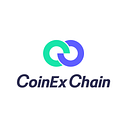CoinEx Smart Chain Academy | An Introduction to Public Chains, Private Chains, & Consortium Chains
On April 6, Bitcoin 2022 kicked off in Miami, Florida, US. The conference attracted over 35,000 attendees, including senior government officials, finance tycoons, and tech experts around the world. Bitcoin 2022 is proof of the BTC boom over the past two years, which also brought blockchain technology under the spotlight. In fact, blockchain technology is far more wide-ranging than Bitcoin. In many cases, the term does not mean full decentralization. Based on the degree of their openness, blockchains can be put into three categories: public chains, private chains, and consortium chains.
In this context, openness involves three aspects, covering the ledger, organizational structure, and ecosystem. Today, we will focus on the difference between public chains, private chains, and consortium chains in these respects.
Public chains — Open and accessible to all
Examples: Bitcoin, Ethereum, CoinEx Smart Chain (CSC)
Public chains are fully decentralized blockchains accessible to all. All users may send transactions that can be effectively confirmed via a public chain and participate in its consensus process.
When it comes to openness, public chains are fully open in terms of the ledger, organizational structure, and ecosystem. Anyone can access and maintain blockchain data and deploy fully decentralized applications controlled by no centralized entities. Hence, a public chain is highly open, with transparent data. For instance, on CSC, any user can build and use applications on the chain. Moreover, CSC also comes with permissionless validators, making sure that all transaction data stays open and transparent.
The stable running of a public chain is maintained by its consensus mechanism. For example, Bitcoin uses Proof of Work (PoW), while CSC employs Proof of Stake (PoS). The consensus mechanism adopted by a public chain also determines its performance. For instance, the PoW consensus mechanism makes the Bitcoin network susceptible to network congestion. The PoS-based CSC, on the other hand, features high efficiency and low fees. Additionally, public chains offer tokens to encourage all nodes to jointly maintain the security of on-chain data. On CSC, users can stake CET to become validators and participate in the governance of the public chain (CSC: https://www.coinex.org/)
Private chains — Transparent within the industry & not open to the public
Examples: Ant Financial, Multichain
Private chains are privately-owned, customized blockchains with a closed system. These blockchains are often built by companies, government departments, or individual entities. A private chain is like a private residence, which is generally used by individuals. It is against the law to break into a house without permission. By the same token, hacking into a private chain is as illegal as hacking into a database. Moreover, the ledger, organizational structure, and ecosystem of a private chain are not open to the public.
Generally speaking, a private chain boasts such advantages as extremely fast transactions and low costs. At its core, a private chain provides a safe, traceable, tamperproof, and automatically executed computing platform that can protect data from security attacks, both internal and external.
Consortium chains — Only open to members of the consortium
Example: R3 Consortium
Consortium chains, accessible only to their members, are blockchains that require registration and permission. Members running a consortium chain must apply for permission to read, write, and record blockchain data according to its rules. The real-world equivalents of consortium chains are clubs and associations at a university — only members within an association may share its benefits and resources.
In terms of openness, consortium chains, which come with a semi-open system, are blockchains that are only accessible to registered and licensed users and jointly maintained by all institutional members.
Conclusion
As fully decentralized blockchains, public chains are widely used in all sectors. Any application scenario that is demanding in terms of trust, security, and durability will benefit from the adoption of a public chain. Meanwhile, private chains or consortium chains are more suitable for scenarios that demand strong privacy protection and enhanced internal supervision. It should be stressed that public chains, private chains, and consortium chains are all blockchains, and they only differ in terms of the application scenario.
CoinEx Smart Chain’s Official Channels
Visit CoinEx Smart Chian Website >>>
Follow CoinEx Smart Chain on Twitter >>>
Follow CoinEx Smart Chain on Facebook >>>
Join our Discord >>>
